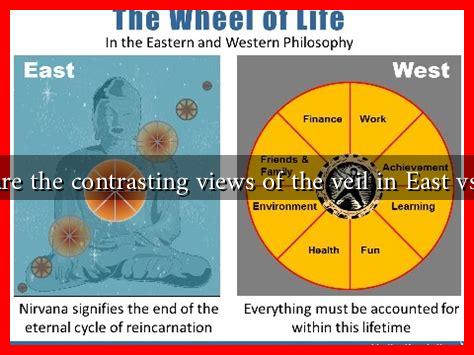-
Table of Contents
What are the Contrasting Views of the Veil in East vs West?
The veil, often associated with Islamic culture, has become a symbol of both oppression and empowerment, depending on the perspective from which it is viewed. In the East, particularly in many Muslim-majority countries, the veil is often seen as a cultural and religious expression. In contrast, in the West, it is frequently viewed through the lens of feminism and secularism, leading to a complex and often contentious debate. This article explores the contrasting views of the veil in the East and West, examining cultural, religious, and feminist perspectives.
The Veil in Eastern Contexts
In many Eastern societies, particularly in the Middle East and South Asia, the veil is deeply rooted in cultural and religious traditions. It is often seen as a symbol of modesty and piety.
- Religious Significance: For many Muslim women, wearing the veil is an expression of their faith. The Quran encourages modesty, and many interpret this as a directive to wear the hijab or other forms of veiling.
- Cultural Identity: The veil can also serve as a marker of cultural identity. In countries like Iran and Saudi Arabia, it is intertwined with national identity and social norms.
- Empowerment: Some women argue that wearing the veil empowers them by allowing them to control how they are perceived in public spaces. They see it as a choice that reflects their autonomy.
For instance, a study conducted by the Pew Research Center in 2017 found that 62% of Muslim women in countries like Indonesia and Turkey view wearing the hijab as a personal choice rather than an obligation. This indicates a nuanced understanding of the veil that transcends mere oppression.
The Veil in Western Contexts
In contrast, the Western perspective on the veil is often shaped by secularism and feminist ideologies. The veil is frequently viewed as a symbol of oppression and a barrier to women’s liberation.
- Oppression Narrative: Many Western feminists argue that the veil is a tool of patriarchal control, used to subjugate women and limit their freedom. This view is often reinforced by media portrayals of women in countries where veiling is mandated.
- Secularism and Integration: In secular Western societies, the veil is sometimes seen as incompatible with democratic values. Countries like France have implemented laws banning the full-face veil in public spaces, citing concerns over secularism and integration.
- Feminist Critique: Some Western feminists advocate for the banning of the veil as a means of liberating women from oppressive practices. This perspective, however, has been criticized for failing to recognize the agency of women who choose to wear the veil.
For example, the 2010 French law banning the burqa was met with significant backlash from various human rights organizations, which argued that it infringed on personal freedoms. This highlights the tension between cultural practices and Western values of individual liberty.
Bridging the Divide: Common Ground
Despite the stark contrasts in views, there are areas where Eastern and Western perspectives on the veil can find common ground.
- Choice vs. Coercion: Both sides can agree that the key issue is whether wearing the veil is a choice or a result of coercion. Empowering women to make their own choices, whether to wear the veil or not, is a shared goal.
- Dialogue and Understanding: Encouraging open dialogue between cultures can foster understanding and respect for differing viewpoints on the veil.
- Intersectionality: Recognizing that women’s experiences with the veil are not monolithic can help bridge the gap. Factors such as class, ethnicity, and personal beliefs play significant roles in shaping individual experiences.
Conclusion
The veil remains a complex symbol that elicits contrasting views in the East and West. While Eastern perspectives often celebrate the veil as a cultural and religious expression, Western views frequently frame it as a symbol of oppression. However, by focusing on the concepts of choice, agency, and dialogue, it is possible to find common ground. Understanding the veil’s multifaceted nature can lead to a more nuanced discussion about women’s rights, cultural identity, and personal freedom. Ultimately, the conversation surrounding the veil is not just about fabric; it is about the broader issues of autonomy, identity, and respect for diverse cultural practices.
For further reading on this topic, you can explore resources from the Pew Research Center and various feminist literature that discusses the implications of veiling in contemporary society.

